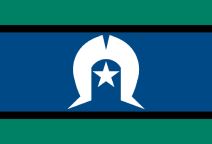On this page:
About water supply
- There are 18 water corporations that provide a range of services to Victorian towns and systems.
- These accounts track water from the time it moves from a waterway, an aquifer or other source to the time it is delivered to a customer or another destination.
- Water supply systems (previously known in the accounts as distribution systems) typically supply within irrigation districts or towns and urban areas. Some infrastructure services both end uses.
- Providing water accounts for water supply systems enable water corporations and the community to understand where delivery efficiency improvements to reduce losses can most readily be made.
- This page provides a statewide summary of the water corporation deliveries to urban and rural water supply systems.
- We also provide detailed accounts for each water corporation; see water supply .
More information:
- The Who manages our water? page describes water corporations and other important organisations involved in managing water.
- Water management is detailed in How is water .
- The How we account for water section provides detail on how we report on and account for the water system supply.
2021-22 overview
Urban deliveries
About the same amount of water was supplied to urban residential and non-residential systems (639,134 ML compared to 623,471 ML in the previous year).
Rural use
About the same amount of water was supplied to rural systems (1,137,985 ML compared to 1,190,100 ML in the previous year).
Wastewater
Of the 525,250 ML of wastewater produced, 79,150 ML (or 15%) was recycled in 2021-22.
Response to water availability
The amount of water available for consumptive and environmental uses will vary from year to year. The entitlement and planning frameworks include mechanisms to conserve and share water between users in response to seasonal variability and water shortages. We have provided more information on these mechanisms in the How is water page.
This section documents any urban restrictions that the Water Corporations put in place to help manage supply in 2021-22.
Urban restrictions
- In 2021-22, there were no urban restrictions on towns. Permanent Water Saving Rules were in place across Victoria for the whole year (Figure 1).
- This is the same as the previous year.
- The last time urban restrictions were in place was in 2019-20, when 20 towns were on stage 1 restrictions (in June 2020).
- More than 450 towns were subject to restrictions at the peak of the Millennium Drought in 2007.
- Go to the "Responding to availability" section in the How is water managed? page for more information on urban restrictions stages.
Other mechanisms in place in 2021-22 included:
- seasonal allocations (statewide surface page) - these were higher than the previous year
- restrictions on licensed diversions from groundwater (statewide page) - there were fewer in 2021-22 compared to the previous year
- restrictions on licensed diversions from unregulated streams (statewide surface page) - there were fewer in 2021-22 compared to the previous year
Other possible mechanisms that were not applied in 2021-22 included:
Water deliveries via water supply systems
This section reports on the water delivered to customers by water corporations via water supply systems. The volume of water supplied does not include water taken directly by customers from rivers, groundwater or small catchment dams. Therefore, the volume shown as deliveries here is different to the 'use' of water reported on in the statewide surface , statewide and Year in pages.
In 2021-22, water supplied to customers via water supply systems was 1,777,119 ML, about the same as the previous year (1,804,280 ML). This includes:
- 423,276 ML for urban residential customers
- 215,858 ML for urban non-residential customers
- 1,137,985 for ML rural customers.
Table 1: Water corporation urban and rural deliveries
Recycled water
Treated wastewater can be recycled for a range of non-drinking uses. Once treated, the recycled water is suitable for a wide range of uses including for:
- agriculture for irrigating crops and for stock drinking water
- irrigating sports fields and open spaces such as golf courses and parks
- residential and commercial uses (via purple pipe schemes) or industrial processes
- supporting biodiversity; for example, the Ramsar wetlands at the Western Treatment Plant
- wastewater treatment processes.
In 2021-22:
- 525,250 ML of water was produced by wastewater treatment plants
- 79,150 ML of wastewater was recycled and reused - this includes 10,433 ML that was used in wastewater treatment processes.
The Essential Services Commission made some changes to recycled water data categories in 2021-22, so we have not included a comparison to 2020-21 in the table below. Here is the data for . Information about the changes to the data for 2021-22 has been detailed in the "How we account for water supply section" on the How do we account for page.
In Table 2, 'Other inflow' and 'Other outflow' can represent a number of activities or situations. They typically relate to examples of wastewater taken out of or transferred into storage or transferred between plants. More information on each instance of this is provided on each of the water corporation .





